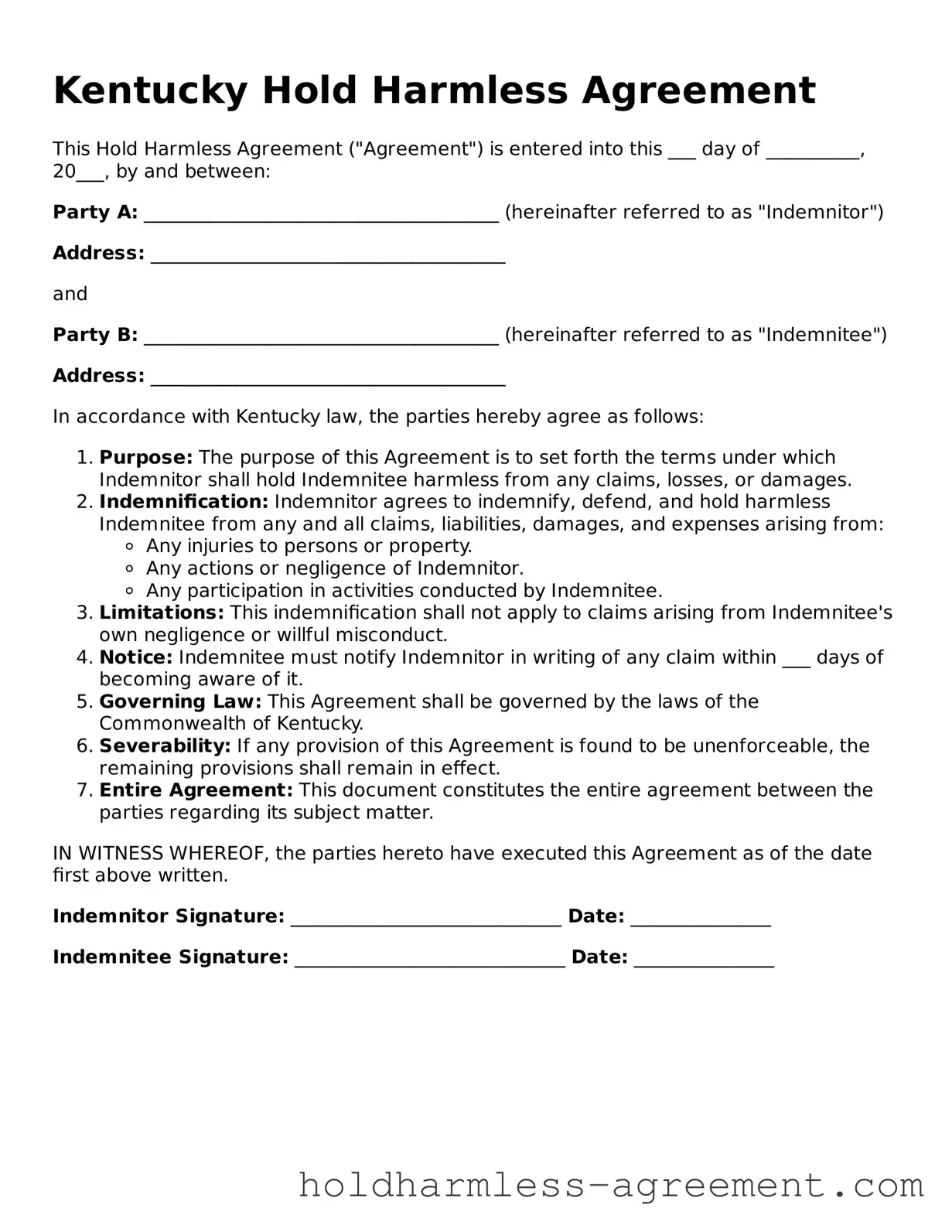Printable Hold Harmless Agreement Form for Kentucky State
The Kentucky Hold Harmless Agreement is a legal document designed to protect one party from liability for any injuries or damages that may occur during a specific activity or event. By signing this agreement, individuals acknowledge the risks involved and agree not to hold the other party responsible. Understanding this form is essential for anyone participating in activities where potential risks are present.
Get My Hold Harmless Agreement
